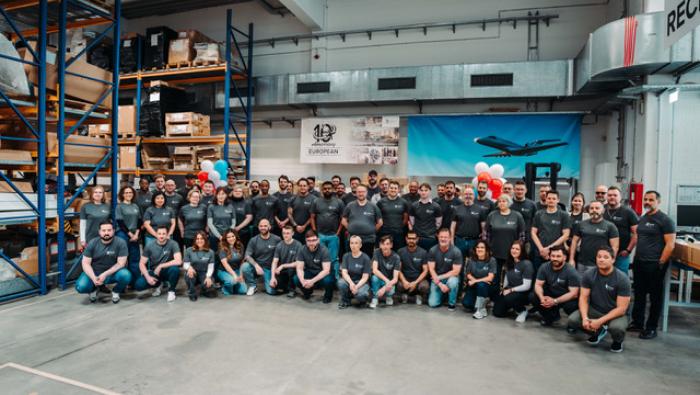CRS Jet Spares has been in business for more than 30 years, providing aftermarket parts support for a variety of business jets. Based in Fort Lauderdale, Florida, Corporate Rotable & Supply (CRS) opened in 1982 in Hialeah, Florida, specializing at first in the Sabreliner jet. Over the years, the company has expanded to serve a variety of aircraft: Gulfstreams, including the Astra and G100; Hawkers; Challengers; Falcons; Learjets and Beechjets.
In Brazil, CRS (Stand 1016) partners with One Aviation. CRS is also an authorized Securaplane sales and service center in Brazil. Securaplane’s specialty is manufacturing lithium-ion energy storage products, power conversion systems, aircraft camera and security systems, onboard wireless intranet systems for smoke detection and emergency lighting systems.
“We seek opportunity internationally,” said CRS vice president of sales and business development Jack Caloras, “and we’re trying to partner with companies to help us out.” There is a large fleet of Learjet 35 and 40 series jets in Brazil, he added, “which is a good program for CRS. We’re going to work on that type of support and focus on Securaplane distribution, sales and service from Brazil.”
Parting Out Airframes
While most of CRS’s focus over the years has been providing components to keep business jets in the air, one aspect of that business has been growing: parting out of older airframes. According to Caloras, “Many classic airframes that, just a few years ago, would have been considered premier airframes are now at a tipping point when faced with the option of selling an airworthy airframe or taking the aircraft off the market to be taken apart and sold as pieces.” CRS has parted out about 15 airframes so far, including a recently dismantled Astra, a Challenger 601 and Falcon 50.
“We’ve always purchased aircraft in the past,” Caloras said, “but it seems to be a much different type of situation that’s providing that need or opportunity at this point, with the economics being so much more a part of the process. It’s always been about money, but now with prices [so low], so many people are upside down in their airplanes.”
With more older jets becoming uneconomical to operate due to growing maintenance costs and extremely low valuations, CRS is seeing about four to five offers per week to part-out older jets, according to Armando Leighton, founder and president of CRS. The process is a win-win for the aircraft owner and for CRS, given the company’s background in supporting many business jet types and the need for owners to obtain maximum returns on their investments.
“We have a formula for success and a proven record on how to handle this type of project professionally in order to generate the most revenue possible,” said Caloras. “It is a very attractive option for people involved with aircraft ownership when facing the choices brought upon by change.” And it isn’t just aircraft owners that are interested in parting out old airframes, but also financial institutions, insurance companies, aircraft brokers and attorneys.
Not all airplanes are suitable for parting out, however, and the value of the individual components depends on how much of the fleet continues to fly and whether there already are enough parts to support the remaining airplanes. Gulfstream GIIs, for example, are rapidly leaving the airworthy fleet, and there are so many parts available for the few GIIs still flying that there is a glut of as-removed parts on the market. CRS invested in the GII and GIII market a few years ago, buying a large inventory of airworthy components, which are more attractive to operators than used as-removed parts. CRS offers new and airworthy GII and GIII components with warranties.
In either case, CRS stands ready to help customers keep their jets flying or to find an economical path to smoothly transition an aircraft through the end-of-life process.







